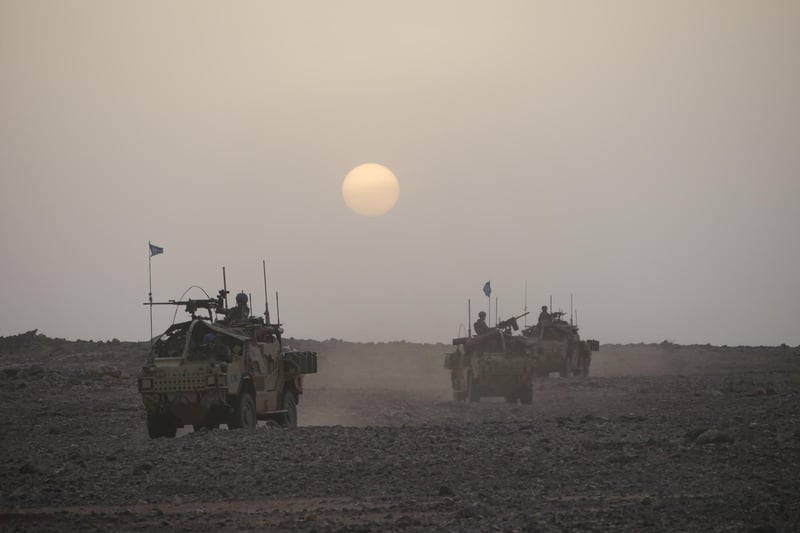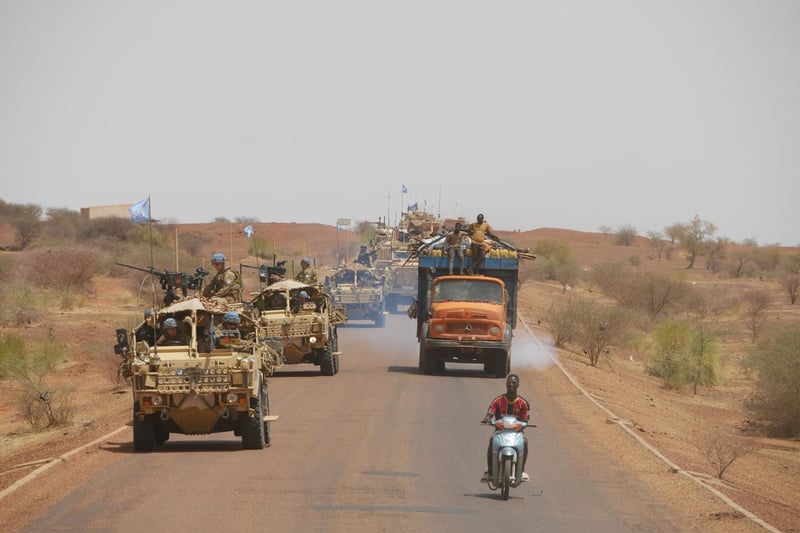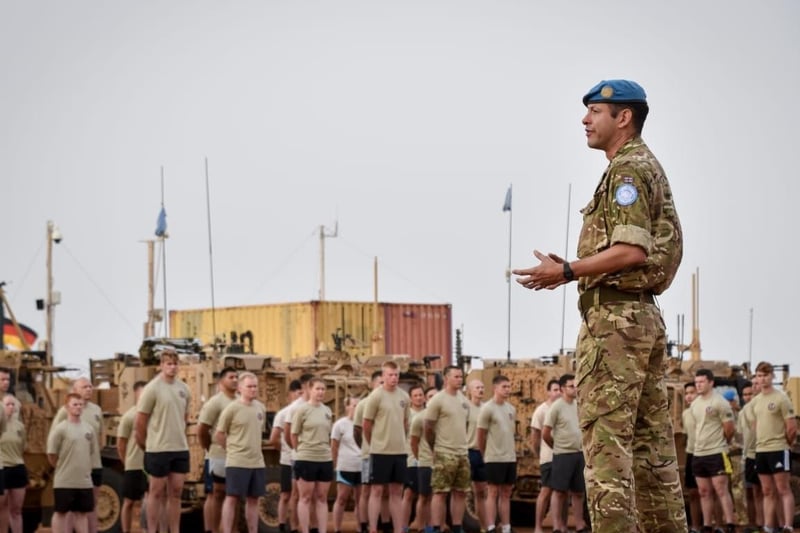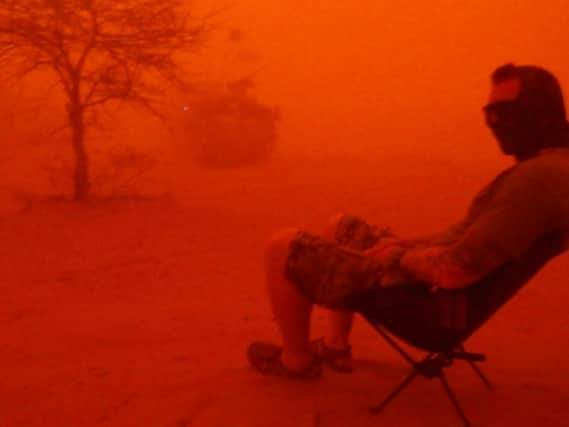The 300-strong UK Long Range Reconnaissance Group (UK LRRG), who are currently deployed overseas on UN peacekeeping operations in Mali have commemorated the Battle of Talavera.
The Battle of Talavera took place on 27 July 1809 in Spain between the forces of the Duke of Wellington against the Napoleonic French during the Peninsula War. For its actions on the day, the 48th Foot (Northamptonshire Regiment) were nicknamed the “Heroes of Talavera”.
The Second Battalion, The Royal Anglian Regiment “The Poachers”, whom the UK LRRG is formed around commemorate Talavera each year.
However, the soaring forty-degree heat and austere conditions made it a very different experience compared to recent years in Cottesmore, Rutland where The Poachers are based. This year, Talavera was commemorated by a formal parade in the morning, followed by an Olympic games where partner nations were invited to compete in activities ranging from a 100m sprint to a tug of war.
Warrant Officer Class One (Regimental Sergeant Major) Rawdon from Horncastle, Lincolnshire says that “Days like these are important because it offers us the time to reflect”
The UK LRRG is now eight months into a three- year commitment to conduct UN peacekeeping operations in Mali. The role of the UK LRRG sees it conducting patrols up to twenty-eight days at a time in some of the harshest conditions the British Army has operated in for some time. The intense heat which regularly reaches fifty degrees is interspersed with dramatic sand- storms, which for a period turns the world orange and reduces visibility to such an extent that you can barely see your hand in front of your face. If this isn’t enough to contend with, this is usually followed by intense thunderstorms and torrential rain which turn the already complex terrain into a quagmire.
Sergeant Wallis from Northampton says, “The ground is very demanding on the vehicles and is one of the biggest challenges we face out here.”
On its most recent patrol in the area surrounding Gao in eastern Mali, which is also the size of Belgium, the UK LRRG clocked up over 1000 km and visited some twenty villages. The key aim being to understand the drivers of insecurity in the region and to ultimately protect civilians. The unique capability of the UK LRRG is its ability to travel to hard to reach places which are not often visited by other UN units.
Lieutenant Bremridge says, “The locals are very friendly and welcoming, they just seem pleased to see us, especially in the places that the UN don’t ordinarily patrol due to the distances from UN bases.”
The UN mission in Mali began in 2013 and since then it has been monitoring a peace accord between the Government of Mali and Signatory Armed Groups. However, what has made the situation more complex is the rise of the terrorist groups of Al- Qaeda and Islamic State in the Greater Sahara (ISGS), who are fighting one another for greater influence within the area, whilst both being pursued by the French who have been conducting counter terrorist operations in Mali since 2014.
The Second Battalion, The Royal Anglian Regiment “The Poachers”, whom the UK LRRG is formed around commemorate Talavera each year.




